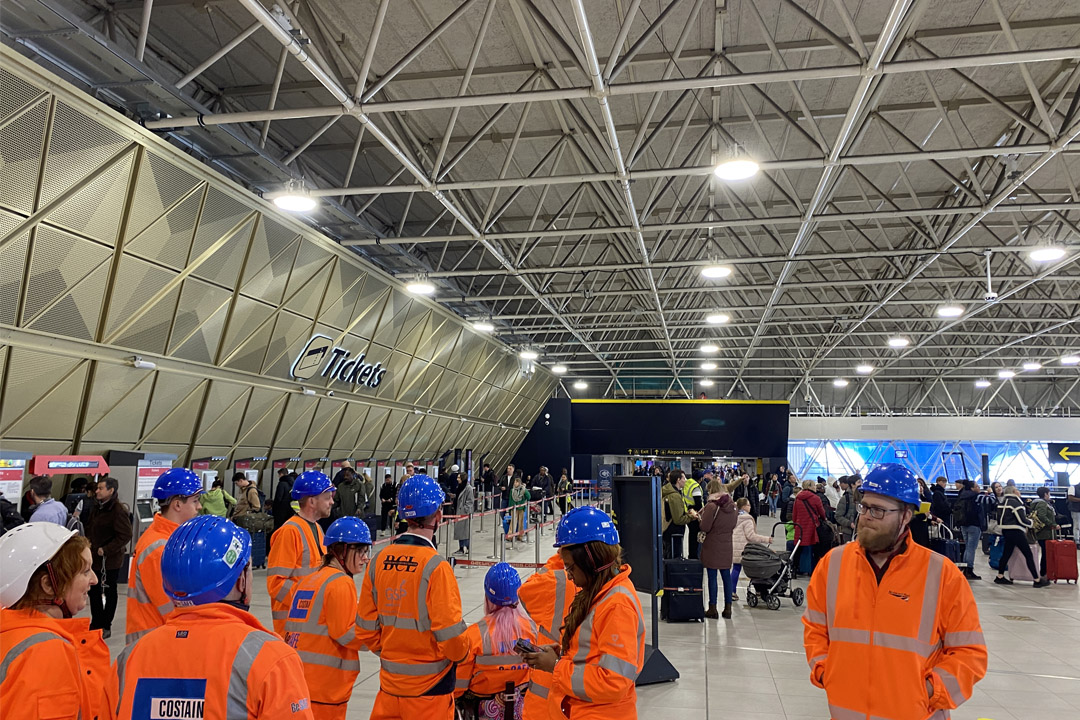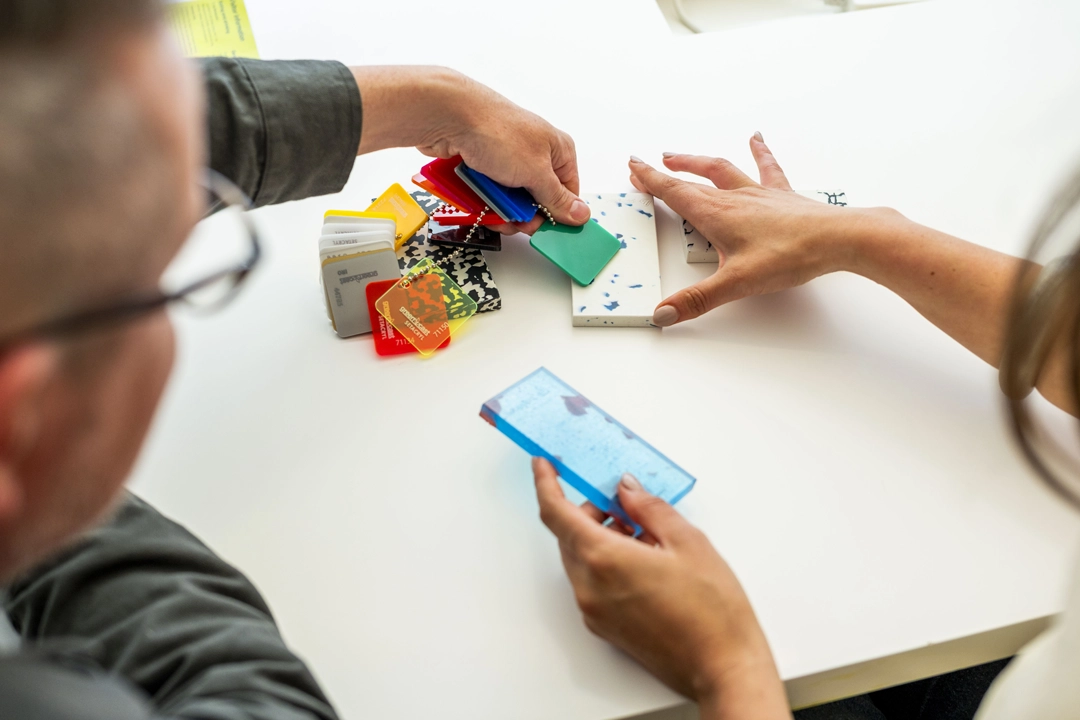Designing with direction: integrating wayfinding into architectural thinking
Great architecture tells people where they are. Great wayfinding helps them understand where they’re going next.
Both disciplines share a common goal: to guide people intuitively through spaces. Architecture does this through form, space, light, and materiality, while wayfinding makes that intent explicit through visual, tactile, and digital cues. When integrated effectively, they create a seamless, stress-free journey where users can navigate naturally.

Wayfinding complements architecture by translating spatial logic into clear, human-centred guidance. It is more than signage - it is about interpreting space, considering human behaviour, and communicating it in ways that are usable, inclusive, and visually coherent. A cohesive wayfinding system uses a unified graphic language including typography, iconography, colour, and form to make navigation intuitive while reinforcing a brand’s identity and tone.
Like architects, wayfinding designers spend years honing their craft. Their work draws on multiple disciplines including graphic design, product design, architecture, landscape, and user experience design, ensuring solutions are both operationally effective and visually harmonious.
Tackling wayfinding in house and wondering what value partnering with a specialist consultancy could bring, without compromising the architectural intent?
Specialist consultancies can bring focused expertise that enhances architectural design without compromising it:
Human-centred research and insight
Wayfinding designers study how people perceive and navigate spaces, using psychology, behaviour analysis, and accessibility standards to anticipate challenges before they arise. For every project, we undertake a discovery and research stage at the beginning. This discovery phase is dedicated to developing a thorough understanding of client’s ambitions, including user and staff needs, and the site’s physical and operational characteristics. At Mima we study the spaces in relation to key movement principles such as flow, decision-making points, and spatial hierarchy to understand how people currently navigate and interact with the space.
Through this process, we will gather essential insights into user behaviour, identifying patterns in how different user types engage with the site and its facilities. These findings will help define current wayfinding habits and shape the desired user experience. To achieve these aims, our expert team employs a series of bespoke research activities designed to anticipate user needs and interpret behaviour effectively including workshops, ethnographic research, detailed on-site audits and personas and scenario testing.
Cross-disciplinary integration
By combining graphic, UX, and operational design, consultancies ensure wayfinding works across all touchpoints and scales effectively. When integrated early with architectural design, this collaboration ensures that navigation feels like a natural part of the space rather than an add-on.
Evidence-based testing and iteration
Tools such as visitor journey mapping, audits, and user testing validate designs, producing systems that are both elegant and robust. For instance, during the redevelopment of a cultural venue, wayfinding prototypes can be tested with a diverse range of visitors - from families and first-time tourists to people with visual or cognitive impairments. Insights from these testing periods can highlight unexpected points of confusion, prompting refinements in terminology, iconography, and placement. The result is a wayfinding system that not only complements the architecture aesthetically but also performs effectively under real visitor conditions.

Scalability and adaptability
Systems are designed to evolve with changing visitor patterns, technology, or facility expansions. At the National Maritime Museum, Greenwich, our wayfinding system was inspired by maritime movement, using laser-cut aluminium panels featuring a fluid pattern that supports flexible, modular signage with potential for digital integration. The design extended to digital screens and Welcome Hubs co-created with RMG’s in-house team, offering visitors key information and “What’s On” displays.
Regulatory and inclusivity expertise
From accessibility standards to inclusive design best practice, wayfinding specialists ensure systems serve everyone while maintaining compliance. Mima, as a name, comes from joining Micro and Macro. We take a wider view of systems and the interconnections; then we can look inside and look at how individual touchpoints contribute to great experiences and what it takes to deliver them. Our work comes from a deep understanding of how design can connect people to place, process and experience. We describe it as designing the world through the human lens. Because only design driven by human behaviour can create spaces, services and experiences that we can instinctively engage and connect with.
By collaborating with wayfinding experts, architects can preserve their design vision while ensuring that every space is intuitive, accessible, and enjoyable to navigate. The result is architecture and wayfinding working in harmony - spaces that are not only beautiful but function effortlessly for everyone.